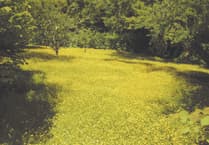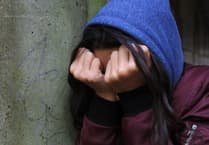Over the next few weeks we’re going to look in detail at who we are and how we’ve changed recently using data from the Office of National Statistics. Between the last two censuses (held in 2011 and 2021), the population of South Hams increased by 6.6 per cent, from just over 83,100 in 2011 to around 88,600 in 2021. The population here increased by a smaller percentage than the overall population of the South West (7.8 per cent), but at a similar rate to the overall population of England (up 6.6 per cent since the 2011 Census).
In 2021, South Hams was home to around 0.7 people per football pitch-sized piece of land. This area was among the lowest 10 per cent for population density across English local authority areas at the last census. This article generally uses percentages to enable comparisons over time and between areas. The percentage point change is also used to show the difference between the 2011 and 2021 percentages.Population growth was lower in South Hams than across the South West as a whole Between the last two censuses, the average (median) age of South Hams increased by three years, from 48 to 51 years of age. This area had the joint highest average (median) age in the South West (alongside Dorset, Torridge and West Devon) and a higher average (median) age than England (40 years). The median age is the age of the person in the middle of the group, meaning that one half of the group is younger than that person and the other half is older.
The number of people aged 65 to 74 years rose by around 3,000 (an increase of 28.5 per cent), while the number of residents between 35 and 49 years fell by around 1,900 (12.0 per cent decrease).The share of residents aged between 65 and 74 years increased by 2.6 percentage points between 2011 and 2021. The percentage of households in the social rented sector increased in South Hams, but fell across England.
In South Hams, the percentage of households in the social rented sector rose from 11.4 per cent in 2011 to 11.8 per cent in 2021, while across England it fell from 17.7 per cent to 17.1 per cent. During the same period, the regional percentage remained at 13.3 per cent.
Private renting in South Hams increased from 14.3 per cent to 16.1 per cent, while the rate of home ownership decreased from 71.7 per cent to 70.5 per cent. In 2021, 53.4 per cent of South Hams residents described their health as “very good”, increasing from 50.8 per cent in 2011. Those describing their health as “good” fell from 33.2 per cent to 31.5per cent. These are age-standardised proportions.
Age-standardised proportions are used throughout this section. They enable comparisons between populations over time and across geographies, as they account for differences in the population size and age structure. The proportion of South Hams residents describing their health as “very bad” remained 1.0 per cent, while those describing their health as “bad” remained 3.3 per cent. These data reflect people’s own opinions in describing their overall health on a five point scale, from very good to very bad. Census 2021 was conducted during the coronavirus (COVID-19) pandemic. This may have influenced how people perceived and rated their health, and therefore may have affected how people chose to respond.
The percentage of people in good health in South Hams decreased by 1.7 percentage points.





Comments
This article has no comments yet. Be the first to leave a comment.